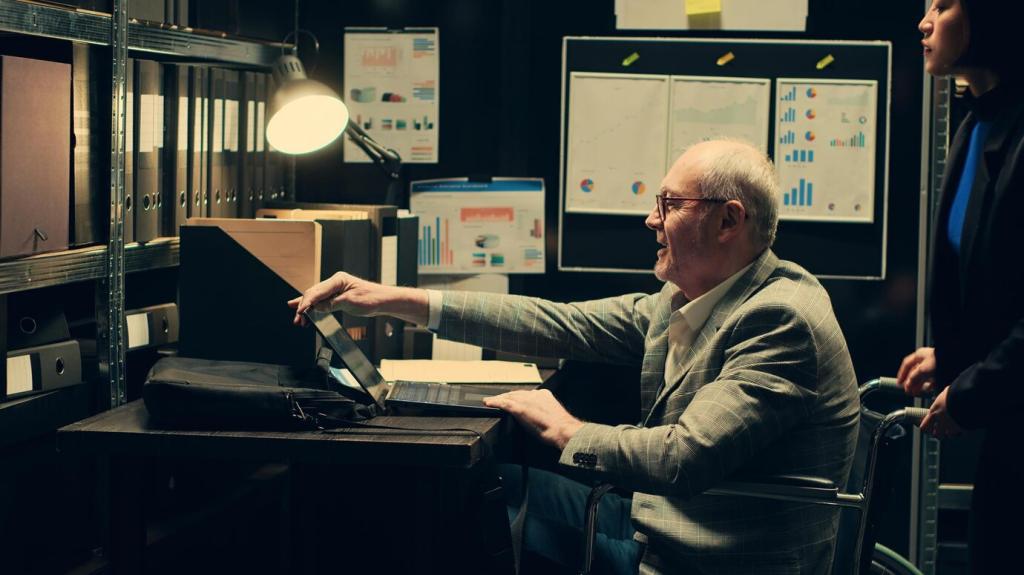Preservation Techniques for Vintage Stamps
Aim for steady temperatures around 18–22°C (64–72°F) and relative humidity between 40–55%. Rapid swings cause paper to expand and contract, warping gum and weakening fibers. Keep collections away from attics, basements, and exterior walls. What’s your preferred target range? Share it to help fellow collectors refine their setups.
Mastering Climate Control: Temperature, Humidity, and Light

This is the heading
Lorem ipsum dolor sit amet, consectetur adipiscing elit. Ut elit tellus, luctus nec ullamcorper mattis, pulvinar dapibus leo.

This is the heading
Lorem ipsum dolor sit amet, consectetur adipiscing elit. Ut elit tellus, luctus nec ullamcorper mattis, pulvinar dapibus leo.
Smart Storage: Mounts, Albums, and Archival Materials
Hinges can scar gum and reduce value on mint stamps. For mint, choose preservative-free, archival mounts sized to fit without crushing perforations. Used stamps tolerate hinges better, but value pieces still deserve mounts. Do you hinge anything today? Share your philosophy and see how others balance history and condition.
Select inert, PVC-free materials like polyester (often branded as Mylar or Melinex), polypropylene, or polyethylene. Avoid plastics with plasticizers that migrate over time. If a sleeve smells strongly or feels tacky, question it. We’re compiling a brand comparison with long-term tests—subscribe to get the latest updates and findings.
Use acid-free, lignin-free albums and storage boxes with interleaving sheets. Place regenerated silica gel in vented pouches nearby to buffer humidity. Do not overcrowd pages; gentle spacing prevents pressure marks. Tell us how you arrange large sets—chronologically or by theme? Your approach might help a newcomer avoid clutter.

Cleaning and Stabilization: When to Soak, When to Stop
Soaking Used Stamps Safely
For common used stamps, a lukewarm distilled water soak can free paper remnants. Never soak mint stamps with gum. Pat dry between clean blotters, air-dry flat, and press under weight to prevent curling. Share your blotter method or drying rack setup—let’s document practical approaches that minimize risk.
Deacidification and Neutralization
Acidity embrittles paper. Deacidification sprays exist but require caution: uneven application can stain or cockle. Test on expendable pieces first and consult a paper conservator for valuable items. Curious about pH testing strips and micro-spots? Subscribe for our step-by-step guide and risk assessment framework.
When to Call a Conservator
Tears near perforations, mold bloom, or ink offset are red flags. A conservator can stabilize fibers without altering authenticity. I once watched an expert save a toned classic by isolating the cause—an acidic backing sheet—and halting further damage. Tell us your triage rules; your checklist could help someone rescue a family heirloom.
Documentation and Provenance: Scanning, Cataloging, and Storytelling
Scan fronts and backs at 600–1200 dpi with color calibration. Save archival masters in TIFF and access copies in JPEG or PNG. Back up to two locations and verify annually. If you maintain a cloud catalog, what tags or fields proved most useful? Share your schema and inspire better organization.



Packing Layers That Work
Place stamps in archival mounts or sleeves, then secure inside rigid boards with corner protection. Add a moisture buffer and use a crush-resistant mailer. Label clearly as do-not-bend. Share your favorite packing sequence and we’ll compare approaches—there’s always a clever trick to learn from the community.
Insurance, Tracking, and Disclosure
Photograph contents, list declared value honestly, and keep serial numbers or certificates handy. Use tracked, insured services. Tell recipients how to open packages safely. Would a pre-shipment checklist help you breathe easier? Subscribe and we’ll send one that covers everything from documentation to route timing.
Unpacking Protocol to Prevent Bends
Open on a clean, flat surface with tongs ready. Cut away tape from the backer boards, never pull. Let cold items acclimate before opening to reduce condensation. Have an unpacking ritual that works? Describe it below and help newcomers avoid those heartbreaking first-minute mistakes.
Ethics of Preservation: Conservation Versus Restoration
Originality and Market Trust
Regumming, reperforation, or color enhancement can erode confidence and value. Conservation aims to stabilize, not disguise. Be transparent about any interventions. How do you document treatments in your catalog? Share your approach so we can build a model disclosure format that collectors respect.
Identifying Over-Restored Pieces
Under magnification, uneven perforation tips, gloss differences on gum, or color halos can reveal work done. Train your eye by studying authenticated examples. Want a visual guide with side-by-side comparisons? Subscribe, and we’ll send an annotated checklist to sharpen your inspection skills.
Transparency, Notes, and Tagging Repairs
Attach discreet notes inside album pages or digital tags in your database describing any stabilization efforts. Future custodians will thank you. Have a story where honesty preserved value and goodwill? Tell us, and let’s celebrate ethical stewardship in philately together.

